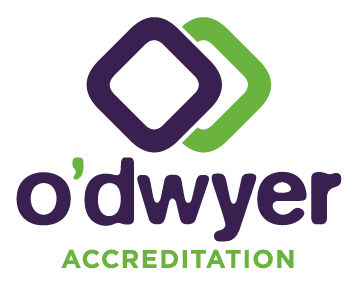NATA uses ISO 17025 to accredit laboratories in certain industry groups. However, getting accredited by NATA to ISO 17025 is not as simple as getting a copy of the ISO 17025 standard and writing procedures to address the criteria. NATA uses additional ISO 17025 Accreditation Requirements, based on their interpretation of ISO 17025, industry standards and local criteria when they assess your laboratory.
There can be as many as 20-30 documents covering ISO 17025 accreditation requirements applicable to your laboratory. Whether your laboratory is new to accreditation or wanting to extend your scope, you need to make sure you have covered all of these.
When you sit down and start reading through all of these documents, you can get the impression that you have an enormous amount of work to do to meet these requirements. However, the laboratory accreditation requirements cover areas you are probably already dealing with on a day-to-day basis. If you’ve covered these bases, you are already well on your way to meeting NATA’s requirements.
Staff & training
You employ or contract staff to manage and work in your laboratory. They have relevant experience qualifications or both, and you supervise those who are still in training. There are defined responsibilities (such as job descriptions) for each role or person.
You give them training when they need it, and, for critical tasks, you assess the results of that training. You sign off on staff members when they are ready to work unsupervised.
Finally, you have a system for monitoring staff competence in their roles to ensure they maintain their skills.
The physical environment of the laboratory
The laboratory is set up to avoid cross-contamination between samples and provide a good and safe working environment for staff. If methods call for specific environmental conditions (temperature, humidity, sterility, radiation, vibration levels, etc.), you provide those conditions and monitor them.
Access to the laboratory is controlled to the degree necessary, depending on the risks involved. Something as simple as a sign on the door specifying who can enter may be enough for your laboratory.
When working on-site at clients’ premises, you put in extra effort to ensure the client provides the correct conditions.
Test methods for ISO 17025
You use the correct methods based on client requirements and technical validity. These can be published or standard methods, or your laboratory might develop methods inhouse. Either way, you have made sure that the methods can accurately determine the property in the types of samples you receive.
In-house developed methods are validated to make sure they produce reliable test results. This validation includes working out the measurement uncertainty for the method, which can seem daunting at first. However, we can help you develop a system that can be easy to follow with a bit of practice.
Laboratory equipment
You have provided all the equipment necessary to perform the testing and any other processes such as sample preparation. The equipment can achieve the required accuracy and complies with any specifications in the methods.
You have up-to-date instructions on using the available equipment, and you make sure that only trained people use it. You make sure the equipment is checked and or calibrated regularly if it significantly affects the test results.
Sampling for ISO 17025 accreditation
When your laboratory does sampling, it is based on sound statistics and, preferably, a published standard.
Handling of test items
You make sure that test items are uniquely identified and not damaged by transport, storage, or other factors. You record any problems with the test items before you start processing or testing.
QC and proficiency testing
You have a system of quality control testing and/or proficiency testing that ensures your test results are valid, and you monitor the QC results for trends.
Recording and reporting test results
You keep complete records of testing, including original observations, the staff member’s identity, critical equipment, and other factors that can significantly affect the test result.
Test reports are factual and can be understood by the client whilst containing all required information.
Management and quality improvement
Key processes such as quoting and/or accepting new work, purchasing, subcontracting and customer feedback are planned and defined. You have documented all of your key processes (including the technical areas) and have a system to ensure staff can access up-to-date versions of procedures. You keep records of management and quality activities.
You hold regular management meetings to gain perspective on the overall operation of the organisation. You conduct internal audits to make sure your system is still running the way you intended. There is a system for dealing with complaints, improvement suggestions and other non-conformances, and you use the information to improve your performance.
NATA’s extra ISO 17025 criteria
You can find the details of these criteria in the following documents that apply in all ISO 17025 fields of testing:
- ISO 17025 Standard Application Document (affectionately known as the SAD!)
- Equipment Assurance Criteria & General Equipment Table
- NATA Rules
- NATA Procedures for Accreditation
You will also need to select from a range of other documents, depending on which field of testing your laboratory is in:
- Specific Accreditation Criteria, ISO/IEC 17025 Application Document for your industry. We call these SACs. The SAC relevant to you might be called an appendix, an annex, or both.
- 20-30 other documents classified into general accreditation criteria, general accreditation guidance, specific accreditation criteria and specific accreditation guidance.
See the complete list of NATA’s accreditation criteria here.



